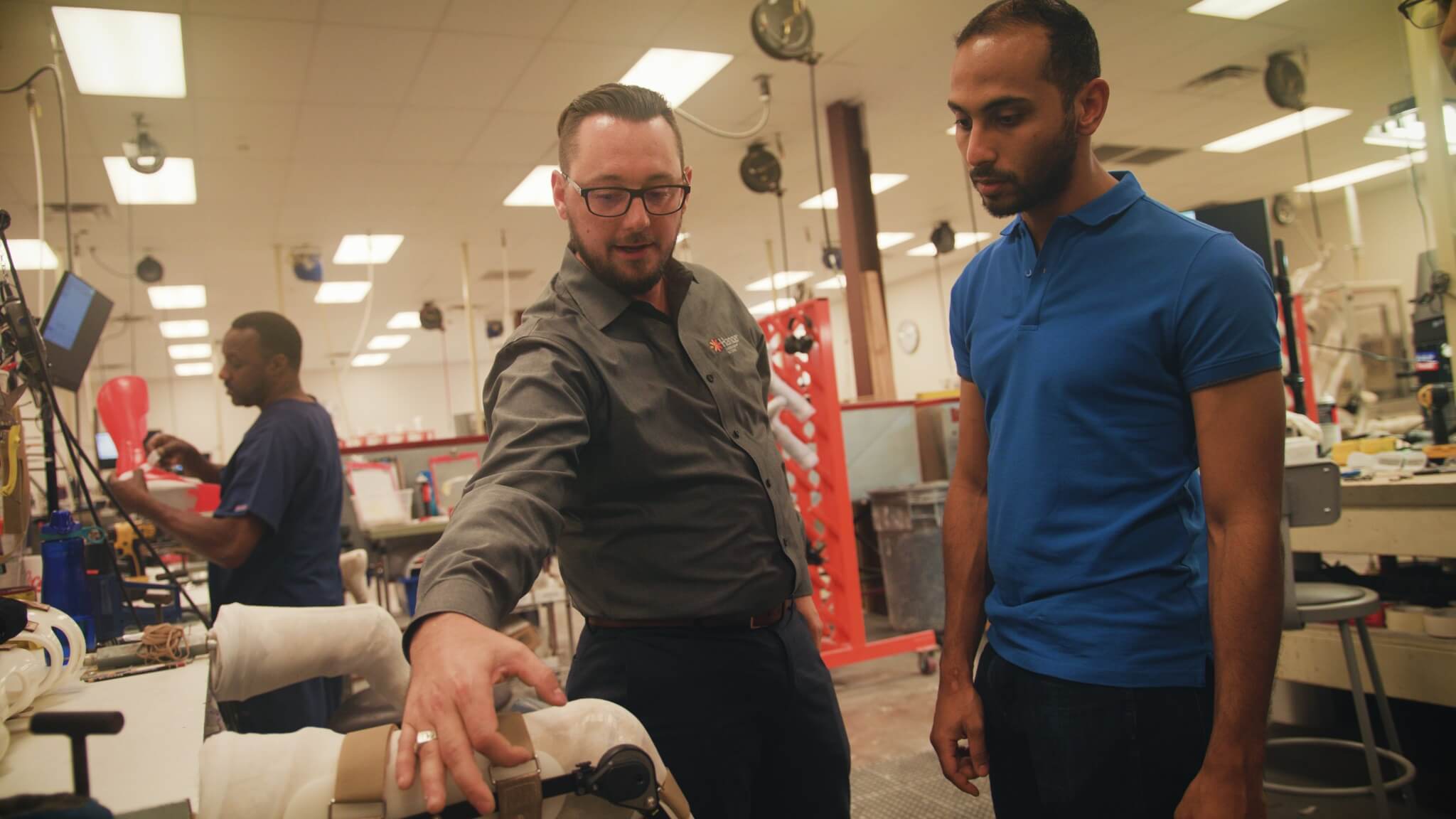AT&T Foundry, Hanger Create Connected Prosthetic Limb

Studies show that properly fitting prosthetics lead to better overall usage of the artificial limbs. That’s why AT&T is working with orthotic and prosthetic provider Hanger Inc. to monitor patient fit in real-time—and even outside of a clinic—by developing the first standalone, network-connected prototype for prosthetic limbs.
Aaron Flores, Ph.D., Vice President of Hanger Clinic—the patient care subsidiary of Hanger—along with Andrew Dibello, Hanger’s manufacturing process and systems leader, worked with the AT&T Foundry for Connected Health, located in the TMC Innovation Institute, to enable artificial limbs to “talk” to the caregivers of patients.
“Being fit with an initial prosthesis is only the beginning of the patient’s mobility journey,” Flores said.
While Hanger doesn’t know who is and who isn’t wearing each prosthesis, they do know that the age and health of the individual at the time of the amputation, the level of the amputation and multiple major-limb amputations are factors that influence prosthetic usage, Flores and Dibello explained.
Therefore, if a prosthesis doesn’t fit, causes discomfort or provides bad mobility, the limb may end up in the closet rather than in use.
“Getting a new prosthetic typically means someone recently experienced a life-changing event, so they are facing a lot of physical and emotional challenges,” said Jessica Autrey, the Foundry’s business development lead. “However, research shows how important it is for a patient’s lifestyle to acclimate to a new prosthetic.”
The team designed the tracking prototype, which looks like a bracelet with a box on top, to attach to below-the-knee prostheses and sync to the cloud via AT&T’s network without requiring Wi-Fi, Bluetooth or a separate mobile device.
RELATED NEWS: Solutions: Can’t Read the Label on Your Meds? Ask Chloe.
Patients with higher prosthetic mobility noted higher quality of life and satisfaction, according to company data in “Mobility Analysis of AmpuTees (MAAT I): Quality of life and satisfaction are strongly related to mobility for patients with a lower limb prosthesis”—a paper published in the October 2017 Prosthetics and Orthotics International.
“Additional data supports the premise that receipt and use of a prosthesis ultimately reduces subsequent health care costs—so much so that the cost of the prosthesis is amortized in one year by reductions in emergency room visits and hospital admissions,” Dibello said. “Collectively, it appears that those individuals who have the potential to walk with a prosthesis but aren’t fit, or abandon the rehabilitation process, are less satisfied, report a lower quality of life and experience higher subsequent healthcare utilization and cost.”
With this new connectivity, the Hanger Clinic can receive data on a patient’s prosthetic usage and contact them to address any fit and comfort issues to facilitate increased mobility. Overall, this is expected to help Hanger better understand how each patient interacts with his or her prosthetic limb.
The patient and provider receive data through an application and web portals that capture an overall picture of how effectively a prosthesis is working. They receive status updates such as if the prosthesis is in use, how long the limb is worn, the number of steps taken and if the patient is walking, running or stable.
“After an amputation, patients often don’t know where to set their expectations regarding the comfort of their prosthesis or their daily activity levels,” Flores said. “Once they get their prosthesis, do they return to the lifestyle they had before their amputation or do they become more sedentary? If we want to help people establish reasonable expectations of themselves, we need to quantify daily activity levels and help them set objective targets, which is why we designed our prototype device to collect data that can assist with that.”






